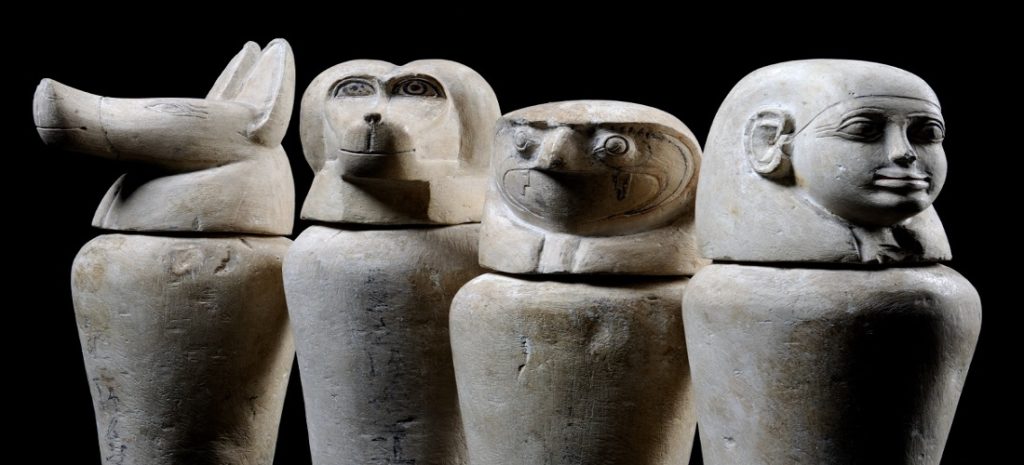Storie d’Egitto

The Egyptian collection of the Civic Museums, consisting of about eighty finds, can be understood at the end of the 1800s, in the years following the foundation of the Museum. The history of education is an inspirational key to the era and to the methods of acquiring the finds through purchases, donations and exchanges. From the fragmentary nature of the acquisitions, it emerges that the museum directors who succeeded each other in the nineteenth century did not pursue the idea of creating a section of Egyptology.
The first donations, by Modenese citizens including the founder himself and first director Carlo Boni, date back to 1875. Among other illustrious donors of Modena who contribute significantly to the formation of the Museum’s collections, such as Marquis Giuseppe Campori astronomer Pietro Tacchini, who, recited in Egypt in 1882 to observe a solar eclipse, received as a gift a mummy’s head and three small stuffed crocodiles that he then sent to the Museum of Modena. From the Acts of the Museum it also appears that Boni, around 1880, had treated the acquisition of some objects with a famous French merchant and antiquarian, Charles Le Beuf. In the list of antiquities the offers are present, along with ethnological and archaeological materials, finds that in part will prove to be false.
The mummy and the other human parts (arts and texts) come from the Regia University of Modena, however the presence of these finds has been ascertained in the city since 1669, the year in which it appears in the lists of the “Ducal Gallery Estense“, a testimony that well before the formation of the Civic Museum the collecting interest of the Dukes of Este also includes Egyptian antiquities. The child mummy, in particular, attested in the lists of 1751, compares together a “a stuffed body; it is said of a queen of Egypt”, of which, at the moment there is no trace. After the last gifts of the heirs of Pietro Tacchini, in 1906, the collection is no longer increased
The finds, preserved over a wide chronological period, correspond to a different category, attributable to royalty, funerary ritual and Templar devotionality.
The collection includes “ushabti” figurines of the New Kingdom (XVIII-XX dynasty, 1539-1070 BC) and Late Period (XXVI-XXX dynasty, 664-332 BC), six canopic vases, including a set in the name of Horsiesi (Epoca tarda), amulets, bronzes, terracotta. Of great interest, a large beetle commemorating the sovereign Amenhotep III (New Kingdom, XVIII dynasty, 1388-1351 BC), which celebrates the bride Ty. There is also an Egyptian child mummy with cartonage and modern anthropoid sarcophagus, some heads and human limbs, as well as three small stuffed crocodiles and some linen bandages from the royal mummies discovered at Deir el-Bahari in 1881.
The inauguration of the exhibition on February 16 at the Civic Museums will be preceded by the restoration of the mummy performed by Cinzia Oliva, one of the leading Italian experts in the restoration of archaeological fabrics and Egyptian mummies, before the public at the Civic Museums, while in the weekend (9 and 10 February) methodologies and results of the intervention will be presented in the eighteenth-century Anatomical Theater in via Berengario, in collaboration with the University Museum of the UniMoRE University.
The exhibition, in the great hall of Archeology on the third floor of the Palazzo dei Musei, will be characterized by a strong reference to the nineteenth-century exhibition, inserted in a contemporary context with multimedia devices. To allow more schools to take advantage of an exhibition and educational path, the exhibition continues until 7 June 2020.
The dialogue with the younger audience will also be guaranteed by the social Instagram project #mummiamo to aggregate images and contents related to the collective imagery about the mummy, from comics, to cinematography, to literature.
Info: www.museicivici.modena.it/it/notizie/storie-degitto-la-riscoperta-della-raccolta-egiziana-del-museo-civico-di-modena

